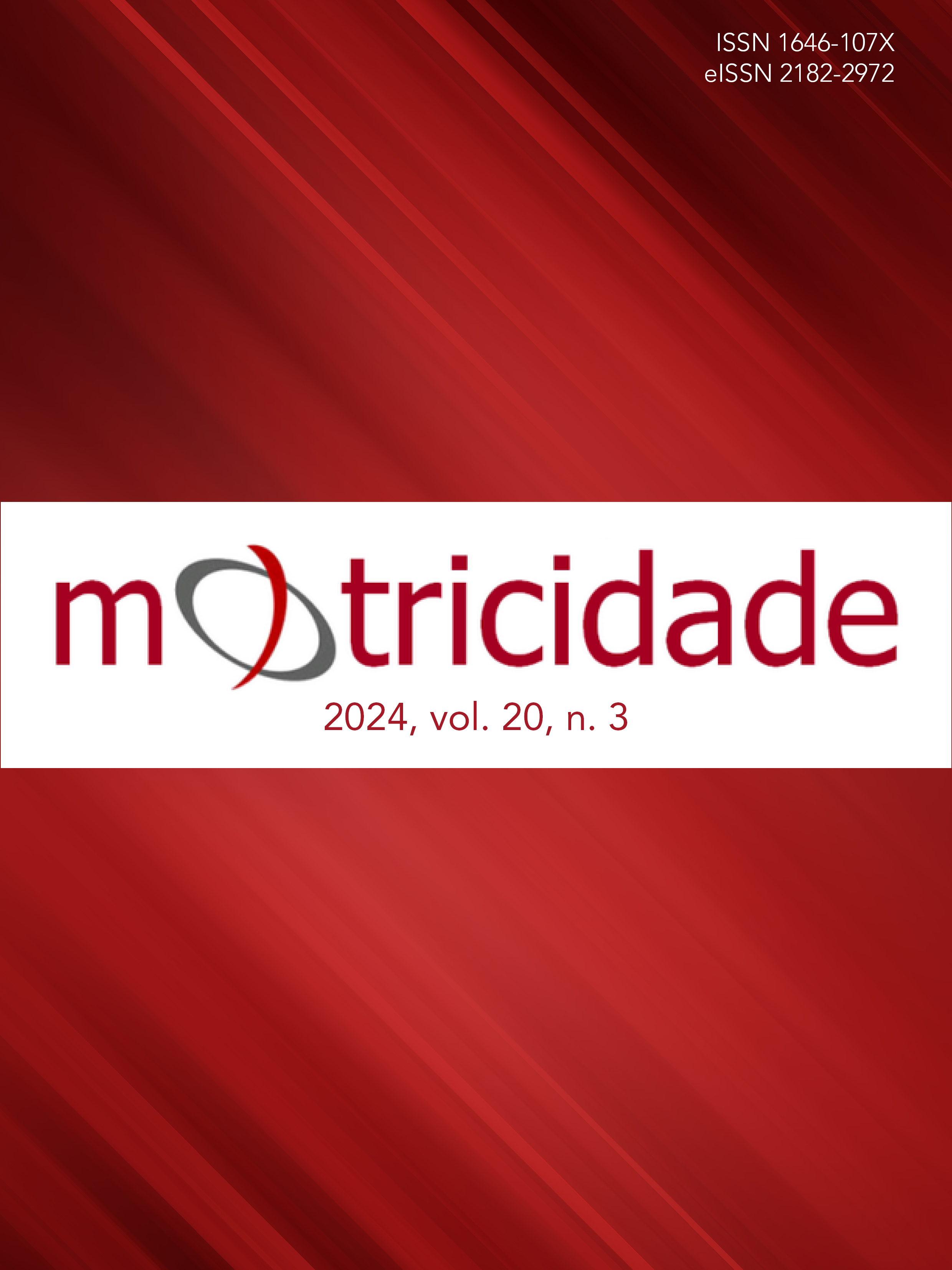Respostas fisiológicas e desempenho físico de atletas avançados e novatos em um teste específico de MMA
DOI:
https://doi.org/10.6063/motricidade.29829Palavras-chave:
Artes marciais, Psicofisiologia, Esportes, Exercício, Desempenho atléticoResumo
No Mixed Martial Arts (MMA), a avaliação da performance dos atletas é efetuada maioritariamente efetuada através de testes não específicos e, até o momento, existe apenas um teste específico, o Anaerobic Specific Assessment for Mixed Martial Arts (ASAMMA). Assim, o objetivo do presente estudo foi aplicar o ASAMMA em atletas de MMA, e comparar o desempenho segundo nível competitivo. No presente estudo, foram envolvidos 20 atletas de MMA, 10 avançados (ADV: 33.80±4.80 anos; estatura de 179.40±9.31 cm e 88.50±20.83 kg) e 10 novatos (NOV: 34.50±5.81 anos; 174.90±5.99 cm e 86.00±10.68 kg). Na primeira sessão experimental, realizaram-se medidas antropométricas, de frequência cardíaca (FC) e de lactato (LA), ambas em repouso. Na segunda sessão ocorreu aplicação do ASAMMA. Devido à demanda fisiológica da avaliação, os atletas avançados realizaram três rounds e os iniciantes apenas um round. Ao final de cada round, registaram-se: i) valores de FC, ii) concentração de LA sanguíneo, iii) total de sequências de golpes realizadas por round e iv) índice de fadiga no ASAMMA. Quanto à FC média, observou-se diferenças entre grupos (ADV: 167±7,27 bpm e 89,2±11,9% da FC máxima; NOV: 179±3,8 bpm e 96,3±3,7% da FC máxima; p < 0,001). A concentração de LA após o primeiro round foi de 15,08±2,86 mmol/L nos ADV e de 17,15±1,36 mmol/L entre NOV (p = 0,054). Entre ADV, o LA aumentou ao longo dos rounds (F(2;10) = 5,81; p = 0,0111; η² = 0,39). Os atletas ADV executaram quantidade superior de sequências de golpes no primeiro round (71,8±7,87 versus 65,6±2,87 repetições; p = 0,003). No entanto, na análise de medidas repetidas, observou-se redução na quantidade de sequências ao longo dos rounds (F(2;10) = 14,37; p < 0,001). Encontraram-se correlações negativas entre percentual de gordura corporal e desempenho no ASAMMA (p < 0,05) e entre FC e desempenho no ASAMMA (p < 0,01). O ASAMMA pode discriminar atletas avançados e atletas novatos, tanto do ponto de vista fisiológico (tendo como indicador a frequência cardíaca), como físico, a partir da quantidade de sequências de movimentos.
Downloads
Publicado
Edição
Secção
Licença
Os autores dos manuscritos submetidos para publicação deverão ceder, a título integral e permanente, os direitos de autor (copyright) à revista Motricidade e às Edições Sílabas Didáticas. A cedência de direitos de autor permite a publicação e divulgação do artigo em formato impresso ou eletrónico e entrará em vigor a partir da data de aceitação do manuscrito. Os autores concedem, ainda, os direitos para a revista Motricidade utilizar e explorar o respetivo artigo, nomeadamente para licenciar, ceder ou vender o seu conteúdo a bases de resumos/indexação ou outras entidades.
Nos termos da licença “Creative Commons”, os autores poderão reproduzir um número razoável de exemplares para uso pessoal ou profissional, mas sem fins comerciais. Nos termos da licença SHERPA/RoMEO, os autores poderão, ainda, disponibilizar/arquivar uma cópia digital final (versão postprint) do artigo no seu website ou no repositório científico da sua instituição.


